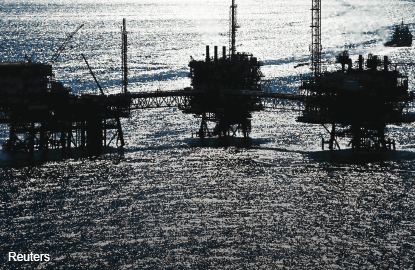
Oil and gas sector
Maintain neutral: Crude oil prices have risen to over US$50 (RM222) per barrel from the US$45 per barrel to US$50 per barrel range over the past three months on news that Opec has reached an agreement to trim output levels.
Nevertheless, the offshore sector continues to face a broad set of challenges such as Brexit, the battle for market share between Opec and US shale producers, and the relatively slow economic growth in China and other emerging markets. Also, opportunities are constrained by high levels of uncertainty and a limited scope for oil price recovery.
The is despite the recent Opec agreement to cut crude oil production by 1.2 million barrels per day (bpd) to 32.5 million bpd in January next year amid the US Senate’s vote to extend the Iran Sanctions Act for 10 years.
While crude oil prices have rallied above US$50 per barrel, uncertainties remain on the extent of US shale production increase, which could offset any Opec reduction.
According to Barclays’ mid-year global spending survey of over 200 companies, global oil and gas capital expenditures are expected to bottom out this year, which could lead to an increase of 5% for 2017 driven by onshore spending.
These findings are corroborated by Douglas Westwood’s latest projections that global onshore spending is expected to rise 10% year-on-year from 2016 to US$186 billion in 2020, driven by North American growth of 19% as rising oil prices return lower quality shale acreage to financial viability with Opec’s upstream expenditure growing 117% from 2014 to 2020.
Barclays also indicates that global upstream spending is expected to decline 22% for 2016 after falling 26% in 2015. Douglas Westwood is forecasting a slower 11% decline in offshore spending in 2016, driven by low rig utilisation levels, and the absence of project sanctioning for high-cost deepwater developments.
Baker Hughes rig count in November rose steadily by 54% to 624 for the US and 19% to 1,678 globally from the all-time US low of 404 in May this year. Notwithstanding the improving onshore segment, Barclays expects that these global spending trends will still be pressured by continued declines in offshore spending, estimated to drop by 34% in 2016 and further decline by 25% in 2017, assuming that oil prices stabilise in the US$55 to US$60 per barrel level next year.
As Petronas Gas Bhd has not revised its crude oil price outlook of US$30 per barrel for 2016 and US$40 per barrel for 2017, we do not expect any significant change in the group’s cautious approach to upstream exploration and development expenditures. Hence, we maintain our projection of Brent crude oil price at US$40 to US$45 per barrel for 2016, and US$45 to US$50 per barrel in 2017. Year to date, Brent crude spot prices have averaged US$43 per barrel.
Persistent low asset utilisation levels will translate into negative cash outflows and heightened credit default risks. For Malaysian operators, which operate wholly offshore, weak capital expenditure roll-out prospects mean that the worst is yet to come for those struggling with high gearing such as Bumi Armada Bhd, Alam Maritim Resources Bhd and UMW Oil & Gas Corp Bhd.
Our top picks are companies with stable and recurring earnings such as Dialog Group Bhd and Yinson Holdings Bhd. Dialog Group’s earnings visibility is secured largely by the Pengerang Deepwater Terminal project with its enlarged buffer zone, while Yinson Holdings’ Ghana floating production, storage and
offloading vessel project will provide the earnings momentum over the next two years.
We also have a “buy” on SapuraKencana Petroleum Bhd for its undervalued assets which may not face further significant provisions in a stabilising price environment. Our “hold” calls are for MISC Bhd, Bumi Armada and UMW Oil & Gas Bhd while Petronas Gas is a “sell” due to the upcoming implementation of the incentive-based regulatory tariff setting mechanism. — AmInvestment Bank, Dec 14